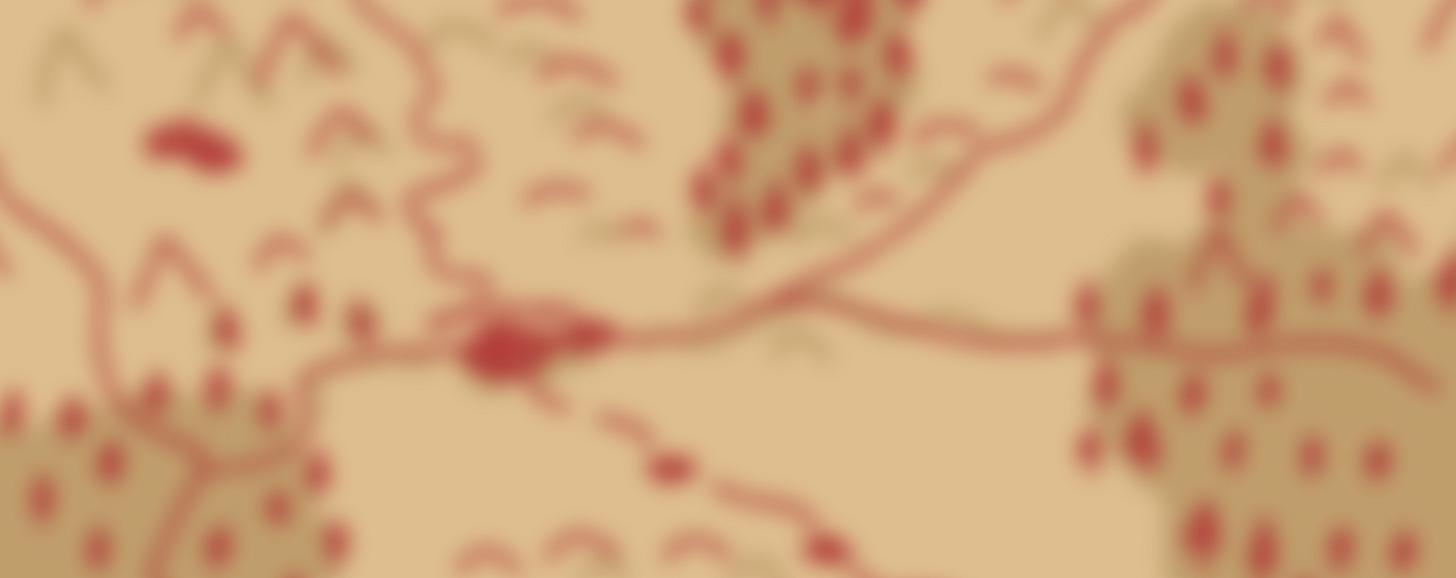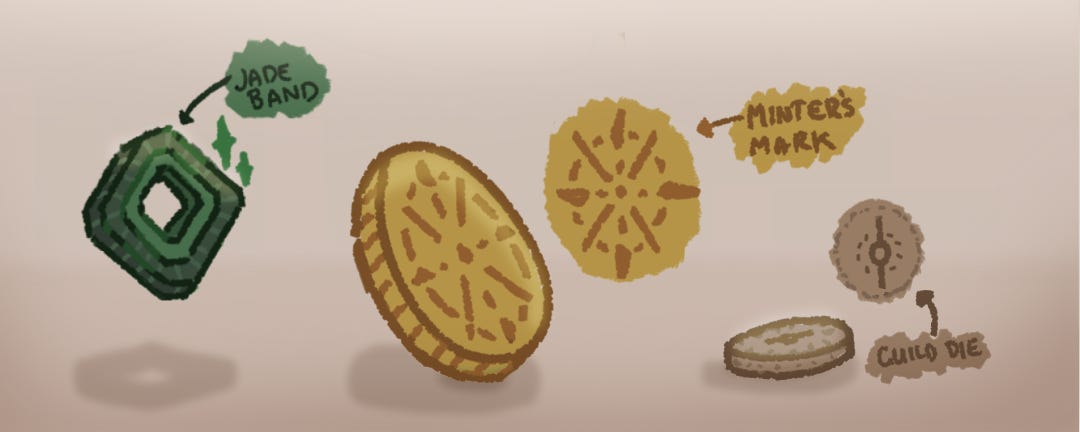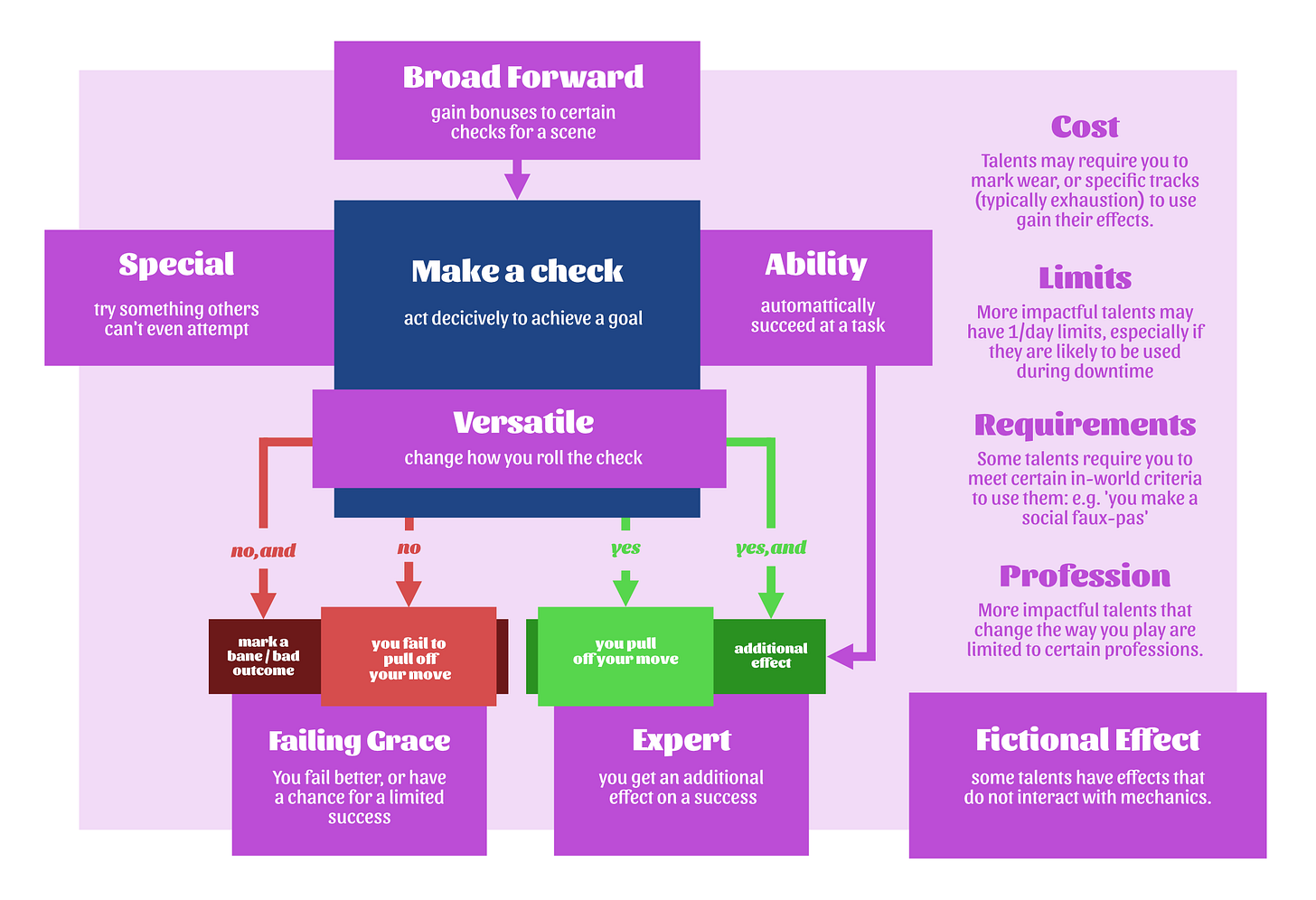preparation
Welcome back, dear reader. I’ve had a busy month since I put out Issue 3, between my studies and work its left me little time for musings over Nemora. But since my 3 year D&D campaign is coming to an abrupt end, I’m realizing now that I have the opportunity to use the Adventurer’s Guide to Nemora in a long term campaign much sooner than expected! So its exciting — if not also somewhat daunting. So I’m finding myself having to answer the question: what do I need to do, to be ready to use AGTN in a campaign?
character options
For starters AGTN needs a robust character creation mechanic, and enough options for multiple people to create distinct characters that are appropriate for long-term play. The good news is the character creation mechanic is good! I’ve playtested it several times and the characters it produces are usually interesting and more three-dimensional than you would see in a D&D style system.
The big challenge is actually creating all of the options, its been a long journey but I’m quite satisfied with the results. I’ve made a graphic which shows all natures and professions available. Currently character options make up around 13,000 words with 124 unique talents. Its a lot, but here they are:
A big part of creating all these character options were designing the talents: each nature has two options, and each profession has four options, all unique. And something that really came in to focus during the latter end of the process were similar “talent models”, and how they interact with the rest of the game mechanics. Below you’ll find two diagrams, one flowchart of the basic check model which AGTN uses, and then an annotated flowchart with different areas noted a talent’s design could interact with.
I will eventually do a deep dive on the model, but for now lets look at how my favourite type of talent works: The Broad Forward. The Broad Forwards allows you to spend a resource in order to gain a bonus or bonuses for an entire scene. For example read the following talent for the Outlaw profession.
Trickster.
Gain an edge for a clandestine skill. In addition 1/day you may mark Exhaustion to gain increased approach to the following checks for a scene.
hide
fast talk
deceive
sleight of hand.
At first glance this seems like a bit of an eh talent. It doesn’t give you anything special to play with, and it essentially only gives you a +1 forward plus you can only use it once per day. But the reason it’s so good is because an adventurer without the talent would have to mark exhaustion to put in extra effort each time they want to make a single check, where you gain the benefit to four types of checks for an entire scene. This is an especially impactful Broad Forward due to the number of skills it applies to, so it is also been limited to once per day.
In the diagram below you can see the various parts of the model that talents can effect. There are also a number of limits or considerations to take note of. In order to make sure no talent feels like “the best choice” more impactful talents often come with more considerations. These talent archetypes are addressed in AGTN, but I feel a visual diagram does a great job at showing HOW the talents interact with mechanics.
a place to begin
At its very basic level a campaign is made of two things things, a setting, and characters. And with characters checked off the list it becomes time to address setting. At this point I have spent more than a year working on this world, but for the most part the setting is up here — oh and by here I mean in my head. For players to get the setting in their head too; to get that initial investment in the world; and to feel comfortable creating rich characters in Nemora they need priming.
And what better way to do that than with a setting primer! I didn’t develop any new lore for the setting primer, it was all there in my myriads of scattered documents and notebooks. But as with all fiction, a good old map can go a long way in creating a sense of place: so comes with tricky part.. what map should I give my players? To answer that we need to put on our design hat and figure out what the map’s goals are and how it can contribute to the rest of the primer.
Parsable. The biggest goal for the primer map is that it must immediately be parsable, and it must contain just enough information to be useful. It should be simple without being overwhelming, and different objects should be instantly readable.
Promote discovery. The map is not supposed to be accurate or exhaustive. The idea is that this map is the most generalised map that still conveys a sense of place, and that over the course of the campaign the details of the map will be discovered at the table. This is something I love in videogames like Terraria — that slow filling in of the world map and discovering all the intricate details within.
Encourage Engagement. Notably the map has no place names aside from “The Fairlands”. All further named geographical features and fiefs are described in the primer in a way that the players are able to label them on their own copy of the map. While it isn’t the easiest way to convey the information, getting the players to actively engage promotes a deeper understanding and engagement with the world.
Fictional artefact. As with most of my worldbuilding, the map should feel like a fictional artefact of the world, thus its limited by the knowledge of the people. This map is a primer. It could be the map you teach to 10 year olds, or the map you might sketch out by memory before marking a location for a friend. This map is intended to give an overview of the main geographical features of the fairlands. I don’t need to include roads and towns and cities, just major features known by most of the denizens
The actual process of drawing the map was quick and dirty and it came out nicely enough. You can view it in the campaign primer document which you can download above. And Below you’ll see two maps blurred by the same number of pixels. On the left there’s my working map of the Fairlands with all the information layers visible, and on the right is the primer map.
Its quite striking how you can still parse the primer map even though its blurred, where the development map bombards you with information and turns into an unreadable mess. Both are necessary for me to run the campaign, but they each have very different goals. And because I’m trying to include a lot of graphics in this issue, below you’ll see a colourised version of the primer map, which I’m currently using as the header for AGTN.
but you can only do so much
At the end of the day though, there’s only so much I can do towards getting the rules ready to use, and the setting ready for play. After the most recent playtests I found I had to make a few sizable adjustments: the rules for setting difficulties needed rewording, I learned how to better design the environmental aspects, and I added a free use of every talent that requires you to mark exhaustion. This is so I can be more punishing with tracks during travel without removing the adventurer’s ability to adventure. There’s only so much I can do before starting this campaign: and I’m realizing that if I end up publishing AGTN there’s going to be a point where I have to say “this is ready”.
Oh, and as a treat I’ve updated the playtest documents! Which you can view with the link below!
I’m committed to keeping this issue a quick one as I have a busy adventurer’s life to attend to, and most of my development and writing time which I’ve put towards previous issues is being used to get this campaign on its feet. Rest assured though, I’ll have a campaign start retrospective and plenty of playtests to reflect on going forward.
Bye for now!
Felix









